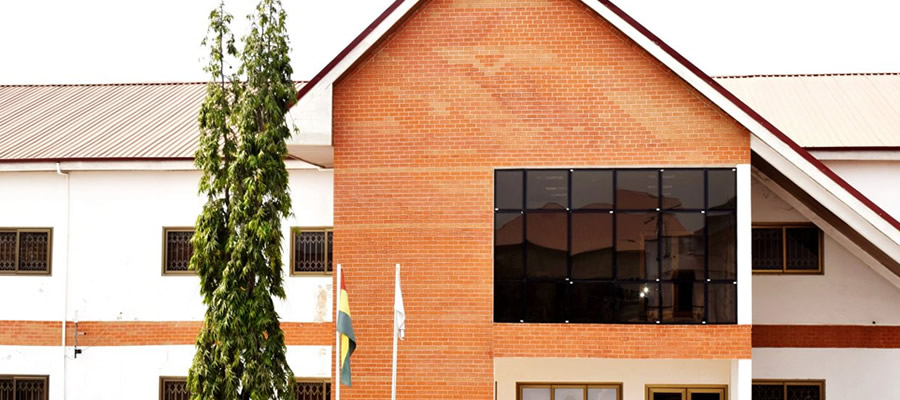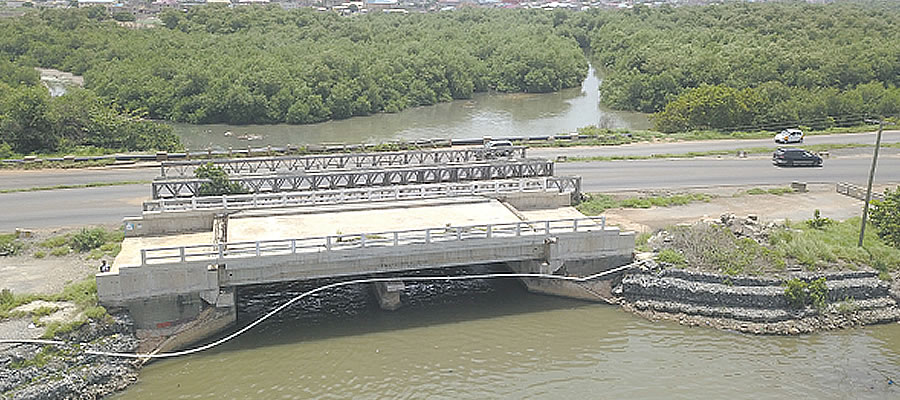

Geology and soils
The coastline of La Dade-Kotopon has a series of resistant rock outcrops, platforms and sandy beaches near the mouth of the Kpeshie lagoon. The coastline is exposed and because of the close proximity of the continental shelf and strong coastal wind action, it is subject to severe erosion. The lagoon systems, which are relatively small and flushing, have been impeded by siltation or the construction of embankments, which have restricted tidal flow.
The soils in the area can be divided into four main groups: drift materials resulting from deposits by windblown erosion; alluvial and marine muted clays of comparatively recent origin derived from underlying shale; residual clay and gravel derived from weathered quartzite, gneiss and schist rocks, and lateritic sandy clay soils derived from weathered Accraian sandstone bedrock formations.
Climate
The La Dade-Kotopon lies in the Coastal Savannah zone. It has two rainy seasons. The first begins in May and ends in mid-July while the second season begins in mid-August and ends in October. The average annual rainfall is about 730mm, which falls primarily during the two rainy seasons. There are few occasions where the Municipality experiences showers and thunderstorms in November and December. Rain usually falls in intensive short storms and gives rise to local flooding where drainage channels are obstructed.
There is very little variation in temperature throughout the year. The mean monthly temperature ranges from 24.7°C in August (the coolest) to 28°C in March (the hottest) with annual average of 26.8°C (Dickson and Benneh, 2001). As the area is close to the equator, the daylight hours are practically uniform throughout the year. Relative humidity is generally high varying from 65percentin the mid-afternoon to 95percentat night. The predominant wind direction in the Municipality is from the West South West (WSW) to the North North East (NNE).
Vegetation
The vegetation of the Municipality consists of dense clusters of small trees, shrubs and grasses, which grow to an average height of six metres. The grasses are a mixture of species found in the undergrowth of forests. They are short and rarely grow beyond one metre. Ground herbs are found on the edge of the shrub. They include species, which normally flourish after fire.
Mangroves, comprising of two dominant species, are found in the tidal zone of all estuaries sand lagoons. Salt tolerant grass species cover substantial low-lying areas surrounding the lagoons. These grasslands have an important primary production role in providing nutrients for prawns and juvenile fish in the lagoon systems.
The soils are mostly infertile for the cultivation of crops. However, there are pockets of small-scale agricultural activities where farmers mostly grow vegetables and fruits for both consumption and commercial purposes. There is however, competition for the limited agricultural land in the Municipality owing to the construction of houses, roads and other developments.
Date Created : 12/4/2017 5:28:34 AM











 facebook
facebook
 twitter
twitter
 Youtube
Youtube
 +233 593 831 280
+233 593 831 280 0800 430 430
0800 430 430 GPS: GE-231-4383
GPS: GE-231-4383 info@ghanadistricts.com
info@ghanadistricts.com Box GP1044, Accra, Ghana
Box GP1044, Accra, Ghana